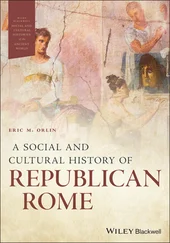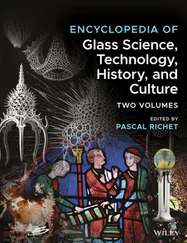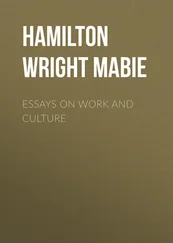When Ishida rejected her for a time and returned to his wife, Abe was devastated. They briefly resumed their affair—this time experimenting with ‘erotic’ asphyxiation (they tightened an obi or ‘belt’ around each other’s neck at the moment of climax)—but Abe was paranoid that Ishida would leave her again.
Early on the morning of May 18, 1936, Abe strangled Ishida to death (using their treasured obi ) as he slept. Then, using a knife, she hacked off his penis and testicles before depositing them—wrapped in newspaper—in her handbag. (Kind of makes the old bunny-boiling routine all seem a bit tame, really.) Using the blood to write ‘Sada and Kitchi together’ on the bedsheets, Abe then went on the run, managing to evade the police for three days before being captured (by which time the ‘Abe Sada Incident’ had successfully scandalized the whole of Japan). She told the police: ‘…I knew if I killed him, no woman would ever touch him again.’
At the resulting trial—and contrary to her own wishes, as well as those of the prosecution—Abe was not given the death penalty. She instead received a mere six years for the murder of her lover and the subsequent mutilation of his corpse. (The luckless Ishida’s genitalia, meanwhile, were put on public display for a time at Tokyo University’s Medical School. Nothing like letting the poor sod rest in peace, was there’)
Ultimately, Abe served only five years’ imprisonment, being released in May 1941. She attempted to resume her life under an alias, and again had a succession of lovers—but each time the relationship ended when her real identity inevitably became known. (Can’t think why…) In the end, Abe accepted a curious form of employment, being paid to appear at a succession of inns, to cause the male patrons to experience a pleasurable frisson of fear as she stared haughtily at them.
Later in her life, Abe largely disappeared from public view, and it’s not known exactly when she died. But it’s believed to have been some time around 1987, when Abe would have been aged approximately eighty-two—for only then did she finally stop putting flowers on Kichizo Ishida’s haka (tomb).
The ‘Abe Sada Incident’ was the inspiration for the sexually explicit (of course) 1976 movie, In the Realm of the Senses .
Comparisons between the Ainu and the native Indians of North America abound, although the Japanese wouldn’t thank you for saying so. According to Ainu legend, they were in Japan ‘100 000 years before the Children of the Sun’—but as soon those 100 000 years were up, they began losing territory to the Japanese pretty darn steadily.
The Ainu resided mainly to the north of the country, particularly on the island of Hokkaido, which would eventually become their final place of refuge. Their story is depressingly familiar the world over: bullied and hounded from anywhere the Japanese wanted for themselves; forced to agree to unfair land-share deals that were then broken anyway, and brutally dealt with on the few occasions when they tried—always unsuccessfully—to meet force with force.
For a while, the Ainu were left in relative peace in Hokkaido, although following the Meiji Restorationthe large and sparsely populated island began to be viewed as the perfect solution to what, in the rest of Japan, was fast becoming an overcrowding problem.
More and more Japanese began to move to Hokkaido. In case they should be disturbed by the indigenous population—who if they were male didn’t shave once they’d entered adulthood, and who if they were female commonly had a variety of facial and body tattoos—the Meiji ‘government’ (in truth more like an oligarchy) outlawed the Ainu language and many of their customs, while forcing them to live on state-owned ‘farming plots’.
Today, an estimated 150 000 Ainu remain, although many choose to keep their identity a secret due to the discrimination they continue to suffer. Their language is also threatened with extinction: there are well under 1 000 native speakers left.
The closest thing Japan has to a Western-style public house, the akachochin is readily identifiable by the large red lanterns hanging outside. ( Akachochin literally means ‘red lantern’—in days gone by these signified that somewhere sold alcohol.)
Just open the sliding door and venture inside, and if you can’t make head nor tail of the food menu that’s usually written entirely in Japanese, it probably doesn’t matter. There’ll often be at least one customer who speaks sufficient English to help you decipher the à la carte menu, or you can just gesture—with a polite and very Japanese-like movement of the hand—at something you see being eaten that looks quite tasty.
Perhaps you fancy some yakitori (pieces of chicken and onion barbecued on skewers) or maybe you’re willing to try grilled squid. And to go with it—beer or sake? The choice, as they say, is yours.
Commonly used by parents to scare children into cleaning the bath, an akaname (a combination of two words: aka or ‘dead skin’, and name , which comes from the verb nameru —‘to lick’) is a human-cum-frog-like creature with wild hair, an incredibly long tongue and a single clawed toe. It has a penchant for entering dirty bathrooms in the dead of night and licking them clean, which would be very nice of it, if its left-over saliva did not subsequently cause an illness in any human who came into contact with it. And by ‘illness’ I don’t mean a nasty rash or a touch of flu. No, the akaname is frequently credited with causing such serious maladies as pneumonia and cancer. Which is, if you ask me, a bit much, even to scare the most unruly of children into cleaning the bathtub.
Конец ознакомительного фрагмента.
Текст предоставлен ООО «ЛитРес».
Прочитайте эту книгу целиком, купив полную легальную версию на ЛитРес.
Безопасно оплатить книгу можно банковской картой Visa, MasterCard, Maestro, со счета мобильного телефона, с платежного терминала, в салоне МТС или Связной, через PayPal, WebMoney, Яндекс.Деньги, QIWI Кошелек, бонусными картами или другим удобным Вам способом.












